Today, I want to discuss a few options for living comfortably without A/C. Whether it’s a choice you’ve made to reduce your environmental impact (or save money), or because you live in a home without the luxury, ditching A/C doesn’t have to be a terrible thing.
Now, those of you living in the Northern Hemisphere may be wondering why I’d post on this topic in January. Odd, isn’t it? Well, first off, who doesn’t want to entertain thoughts about the sweltering heat when preparing for the cold winter months ahead (mind over matter, my dear, this same theory may come in handy in other seasons, too!)? But actually, a family member is interested in buying a house without air conditioning and would like to know her options as she’d actually prefer to keep the house that way. When my aunt first asked for my advice, I had a few thoughts come to mind- some more realistic than others. I did a bit more research on the subject and came up with the following energy efficient, or “green”, suggestions for living comfortably without A/C.
History of Natural Cooling

Sun angle diagram [Source: ecowho.com]
There are a few free modifications that can be made, but first, it’s key to understand the location and sitting of your home. Traditional vernacular architecture was constructed using regional materials and designed to accommodate the local climate. For example, the pitch of a roof would vary by climate zones, with steeper pitches in regions with higher rainfall. Homes also didn’t need air conditioning as they were built with thermal comfort in mind. It was precisely because luxuries such as air conditioning did not exist that homes simply had to respond to climate. Natural ventilation through strategic openings and thoughtful building orientation helped to create comfortable homes.

A Vernacular style farmhouse in Carroll County, MD [Source: National Register of Historic Places flickr]
Today, this construction method is referred to as passive solar building design, and it certainly has strong ties to our ancestors’ buildings. The location of the sun, the direction of the wind, and regional humidity levels are all factors that come into play in new passive construction. The same should also be considered when cooling an existing home without A/C. In the Northern Hemisphere, the southern facing walls receive the most heat. Passive design orients homes so the longest wall faces south and thus receives greater solar benefits. It’s true that this wall is receiving the most heat and light (for this reason, locating rooms in need of good lighting along the southern wall can be a good idea), but this wall can also easily be shaded in warmer months. With a few minor changes, the sun’s energy and warmth can be used to our advantage.
What Can Be Done About the Heat?
I’ll go over each suggestion in detail at the end, but since this post turned out being rather long, you can find a basic outline of my recommendations below:
Behavior Adjustments
- Work with windows
- Use fans strategically
- Reduce heat generation indoors
- Reduce daytime humidity
- Keep yourself cool
Upgrades and Rehabilitation
- Inexpensive Upgrades: CFLs, Appliance performace, & Energy Star appliances
- Windows: film, treatments, shading, & energy efficient windows
- Insulation and Weatherization: Energy Audit, caulking, and weatherstripping.
- Attic: radiant foil barrier, Fans and vents
- Roof: material, color, green roof
- Landscaping
BEHAVIOR ADJUSTMENTS
Let’s review our options, starting with the least expensive and effortless changes and ending with the more costly investments and modifications. Forming new habits are free, but with persistence these small changes can have a big impact.
Working With Windows
Knowing that the southern windows are letting in the most heat, be sure to keep their blinds closed and drapes pulled. Opening windows in the evening, after the sun has set, will cool the house after a warm day. But unless it’s a very cool and breezy day, windows should be kept shut throughout the daytime, especially along the southern and western (sunny/windy) walls. Wind is key here. In much of the US, winds generally blow from the west. Although it sounds counter-intuitive, windows along the windy walls should be kept shut. You may think it’s a good idea to invite those western winds indoors, but keep in mind that they bring warmer air in that may not be able to find its way outdoors again. Instead, opening windows along the cooler walls (in our case, often at the East or North facades) will actually change the air pressure in your house, forcing warm air out and allowing cooler air from the shady side of the house to enter.
Use Fans Strategically
Another tip is to strategically use fans. Only use fans in enclosed rooms when someone is present to feel its breeze. In reality, a fan’s motor actually generates heat. Fans cannot change the temperature of the air in a room, and only work to move air- either across your skin or throughout the home.
Reduce Heat Generation Indoors
We have little control over the temperature outside of our home, but complete power over heat generation indoors. After we’ve made so many other changes to keep the heat out, we’d be fools to allow heat to develop right under our noses. When not in use, turn off lights (especially those with incandescent bulbs) and heat generating appliances or electronics. Furthermore, avoid overworking certain appliances. For example, as tempting as the refrigerator’s cold oasis may seem, keep its doors closed as much as possible.
Reduce Daytime Humidity
Humidity levels can make even a moderate temperature seem uncomfortably high. And like appliances which radiate warmth, certain indoor activities can also increase humidity. Showering, washing dishes or clothes, and even cooking can produce humidity. Avoid these steamy activities during the day, and reserve them for early morning or late evening.
Keep Yourself Cool
In between focusing our attention on cooling the house, it’s always important to remember how to keep your own body cool. Drink plenty of water, dress appropriately, eat foods that will cool you off or are hot enough make you sweat, and locate rooms that are most often occupied or require heat-generating appliances in cooler rooms or on lower levels (this is coming from someone who has their office and computer in the loft, trust me on this one). There’s a feng shui to thermal decorating, I’m sure. I’ll investigate that one day. Lastly, cover all soft surfaces in the house with smooth white fabrics. “Light-colored fabrics will reflect heat instead of absorbing it, and the smooth texture will give you an impression of coolness” (mind over matter!) [WikiHow, How to Cool Yourself Without Air Conditioning]. Other things, like keeping a wet rag on pressure points (neck or wrists), or misting yourself with a scented water (like in “olden days”!), also work very well.
UPGRADES AND REHABILITATION
Now, we’ve considered the free options, but there are a range of additional upgrades and physical changes (also with a range of price points) that can be made.
Inexpensive Upgrades
It’s hard to tell someone NOT to cook, clean, or use their appliances. Sometimes, we kind of need them, which is why some brilliant folks have invented alternatives. For example, instead of the warm incandescent light bulbs, use CFLs (compact flourescent lamps) which save energy and don’t get hot. CFLs are much cheaper today than they once were, but can still be an investment if you switch all at once. Start by replacing bulbs in the most used spaces, and then slowly replace bulbs as they burn out. Be sure to properly dispose of CFLs at the end of their lifespan.
You’ve also already been warned about water-dependent appliances. You can avoid certain activities, or make these chores more bearable during the day by investing a few pennies to ensure that the gasket seals on your oven, washer, and dishwasher are in good shape, and make sure pot lids are snug. Similarly, switching to Energy Star appliances is also recommended. Although this wont always reduce heat generation (some appliances will), it’s pretty much guaranteed to save you money on your utility bills
Windows
We already considered opening and closing windows and window dressings. But the windows themselves could be made more efficient. For a low cost enhancement, you can apply an inexpensive (around 80 cents a square foot), heat-reflecting film or coating on those windows which face the sun. 3M™ brand offers window film products which can prevent up to 71% of the solar heat entering the home.
For a few more dollars, you can invest in better window treatments, of which there are many options. Shades can be one of the simplest and most effective window treatments for thermal control. While blinds offer great flexibility in the summer (according to energy.gov, “when completely closed and lowered on a sunny window, highly reflective blinds can reduce heat gain by around 45%”), but are terrible when it comes to preventing winter heat loss. Thick drapes, on the other hand, can reduce heat gain by up to 33% as well as prevent up to 10% heat loss in the winter. Drapes and curtains can also be specially made using highly thermal fabrics. Energy. gov suggests that all draperies be closed at night during the winter, as well as draperies that don’t receive sunlight during the day. For more examples, as well as specific instructions for proper installation, check out the Energy.gov page on energy efficient window treatments.
Indoor window treatments prevent heat from getting too far beyond the window. Outdoor treatments, on the other hand, prevent the heat from reaching the window in the first place. Some homes are constructed with a larger overhang along the southern wall which prevents the high summer sun from reaching the window, but still offers daylight to the interior. Awnings can easily be mounted above windows for the same effect. Similarly, alternatives like light shelves (interior or exterior- these features protrude from a point below the top of the window to allow sun light to enter the top without hitting the floor of the interior. See image below), a Brise Soleil (fancy word for sun shade), exterior louvers, trellises, etc. offer a range of attractive styles to suit any home.

Diagram demonstrating how light shelves work. [Source: Autodesk]
Whichever style is chosen, be sure that size is adequate enough to block the high-angled summer sun, yet installed properly to allow light from the low winter sun to enter. If you want something more, go all out and install a porch- shaded by a vine-covered trellis or retractable awning- along the southern wall. This, too, should allow the winter sun to reach the house.

Examples of a trellis or louvered patio cover
Going one step further, you can plant now to provide shade in the future. Shade the southern sides of the home with deciduous trees, which will still allow sunlight to reach the house during cooler months. Also, use landscaping to shade any paved or stone surfaces around your house.
However, the most effective, albeit pricey investment is to completely upgrade the windows- at least those windows along the sunniest walls- to more modern, energy-efficient models. When shopping for a window upgrade, look for low (.30 or below) U-factors and solar heat gain co-efficients.
Insulation and Weatherization
Now, windows are also a gateway for sneaky air trying to enter and escape. It’s important to have your home undergo a good energy audit to assesses air leaks, indoor-air quality, insulation, combustion safety, and the durability of your home’s building components. The audit should detect air leaks and identify points of infiltration, which helps to determine where your first improvements should be made. Weatherize your home by caulking and applying weatherstripping to cut back on the transfer of air around windows and doors. If your home has ducts, be sure that they are sealed and insulated.
And don’t forget that many local government and utility programs offer grants or financing options for homeowners who wish to upgrade and weatherize their home. These are sometimes only available for a short amount of time after purchasing a home, so be sure to do your research.
Attic
The attic is another sneaky space that should be insulated. Treatment with a foil radiant barrier can block as much as 97% of radiant heat trying to enter your home. We all learned in grade school how hot air rises, for that reason, trapping air in the attic is risky. If you have the option, installing an attic fan (or an attic vent or ridge vent) allows the hot air to escape as it reaches the top of your house.
Roof
Lastly, we address the roof itself. Now, from my understanding, the home my aunt is considering has a metal roof. Metal gets hot, right? True, hot to the touch (which might suggest that a foil radiant barrier in the attic is so much more important in a house with a metal roof), but reflective metal roofs can actually prevent the house from heating. I’m not sure the type of metal roof this house in question has, but all roof materials play an important role in house temperature. Allow me to explain.
![[Source: Metal Roofing Alliance]](https://treehuggingurbanism.files.wordpress.com/2013/01/capture.jpg?w=558&h=191)
[Source: Metal Roofing Alliance]
Albedo is the measure, generally speaking, of a material’s reflectiveness. This value ranges from 0 to 1, where a material with an albedo of 0 has the reflecting power of a perfectly black surface- that is, none. Remember how mom always warned against wearing a black tee on a sunny summer afternoon? Exactly. Ever walked barefoot across blacktop? You get the point.
As you might have guessed, a white roof reflects a good amount of solar energy, thus preventing a house from warming as much as it would with an asphalt roof. In the city, many roofs which are hidden from the street are simply painted white. Color plays an important part, of course, but is not everything. The dark leaves of trees, though themselves having a low albedo, actually work to cool the atmosphere through evapotranspiration of rainwater. Furthermore, a black roof might be made of a highly reflective material.
An existing roof can be made reflective by applying a solar reflective coating to its surface. Aluminum roof coatings, for example, start at around $20 a gallon.
Knowing my aunt and her style, I imagine removing the metal roof is out of the question; and it would be for me as well- so much character and much more efficient than I previously knew! But, in most other cases, I rather prefer another option: the green roof. Costly at first, and not feasible for all (okay, most) existing roofs, the green roof provides a thick insulating barrier while preventing solar heating. Low maintenance plants thrive on the roof, which is protected by a special membrane, and provide a cool blanket for the house as they absorb rainwater.
Landscaping
Green roofs are cool (in more ways than one), but not always practical. Still, in general, increasing the amount of green on your property is a good thing. Use native ground-cover in lieu of turf that requires mowing and has little cooling effect. Enviroscaping, Naturescaping, and Xeriscaping are all concepts of natural landscaping and managing temperature on your property. These are all great ideas which I plan to discuss in more detail in future blog posts. But for now, I think I’ve left you with enough to keep the wheels turning for some time.
Cooling a house without A/C doesn’t have to be a nightmare, nor must it cost a fortune. There are plenty of alternative modifications to suit any budget and any style. Those before us managed to live without HVAC systems, as can we!
For more information, check out some of these websites which were of particular use during my research of this subject:
http://www.motherearthnews.com/natural-home-living/cool-your-house-without-ac.aspx
http://www.wikihow.com/Cool-Yourself-Without-Air-Conditioning
http://www.utilitybillbusters.com/articles/cooling/cooling-your-home-without-air-conditioning-isnt-that-impossible/
http://www.finehomebuilding.com/how-to/articles/25-ways-to-save.aspx
http://energy.gov/energysaver/articles/energy-efficient-window-treatments

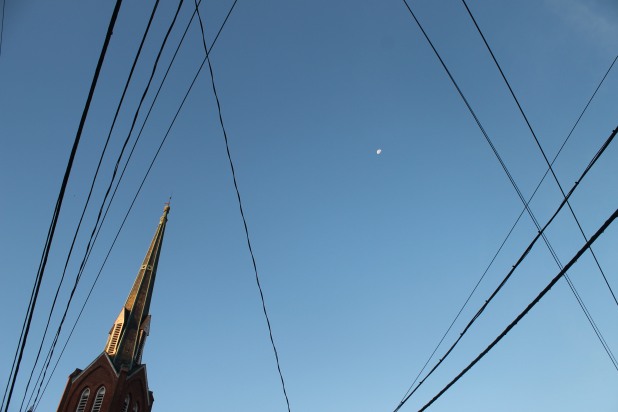
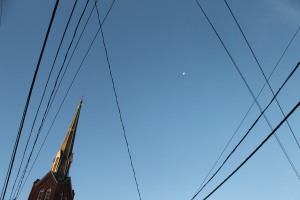
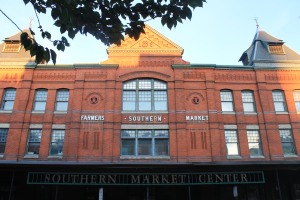
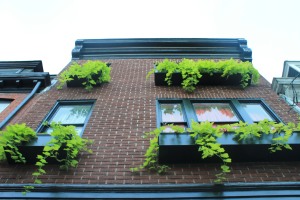
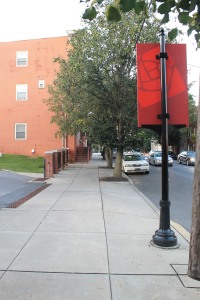
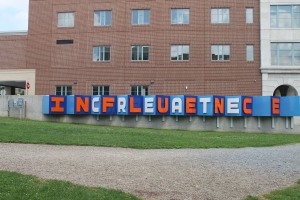

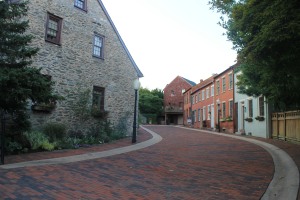
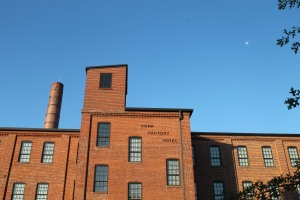

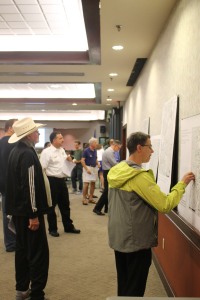
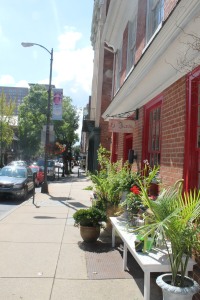

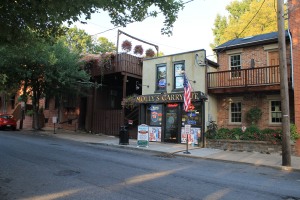
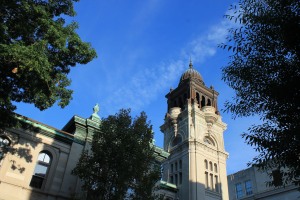
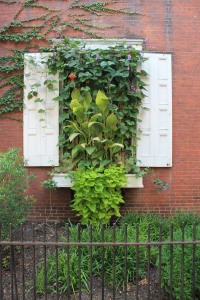
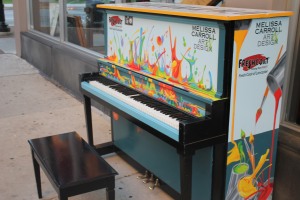
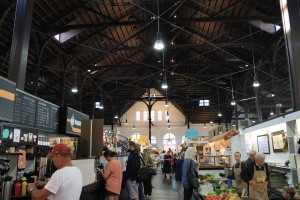






![[Source: Metal Roofing Alliance]](https://treehuggingurbanism.files.wordpress.com/2013/01/capture.jpg?w=558&h=191)